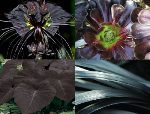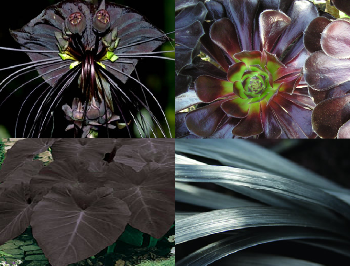
How Would a Binary Star System Affect Life Evolving on an Orbiting Planet?
Jack O'Malley-James of the University of St. Andrews has studied what plants might be like on an Earth-like planet with two or three suns and found that they may appear black or grey.

Photosynthesis - converting sunlight into energy - is the basis for the majority of life on Earth. It is the energy source for plants and, hence, animals higher up the food chain. With multiple light sources, life may have adapted to use all suns, or different forms may develop that choose to use one specific sun. This may be the more likely option for planets on which parts of the surface are illuminated by only one sun for long periods of time.
"If a planet were found in a system with two or more stars, there would potentially be multiple sources of energy available to drive photosynthesis. The temperature of a star determines its colour and, hence, the colour of light used for photosynthesis. Depending on the colours of their star-light, plants would evolve very differently," O'Malley-James said.
In M star radiation habitats, vegetation may have more photosynthetic pigments in order to make use of a fuller range of wavelengths, giving them a ‘black’ appearance. Above: Terrestrial examples of a dark plants (and flowers).
O'Malley-James is working on a PhD, supervised by Dr. Jane Greaves at the University of St. Andrews, Prof. John Raven of the University of Dundee and Prof. Charles Cockell of The Open University, to assess the potential for photosynthetic life in multi-star systems with different combinations of Sun-like stars and red dwarfs. Sun-like stars are known to host exoplanets and red dwarfs are the most common type of star in our Galaxy, often found in multi-star systems, and old and stable enough for life to have evolved. More than 25 percent of Sun-like stars and 50 percent of red dwarfs are found in multi-star systems. In the team’s simulations, the Earth-like planets either orbit two stars close together or orbit one of two widely separated stars. The team has also looked at combinations of these scenarios, with two close stars and one more distant star.
"Our simulations suggest that planets in multi-star systems may host exotic forms of the more familiar plants we see on Earth. Plants with dim red dwarf suns for example, may appear black to our eyes, absorbing across the entire visible wavelength range in order to use as much of the available light as possible. They may also be able to use infrared or ultraviolet radiation to drive photosynthesis. For planets orbiting two stars like our own, harmful radiation from intense stellar flares could lead to plants that develop their own UV-blocking sun-screens, or photosynthesising microorganisms that can move in response to a sudden flare," he said.